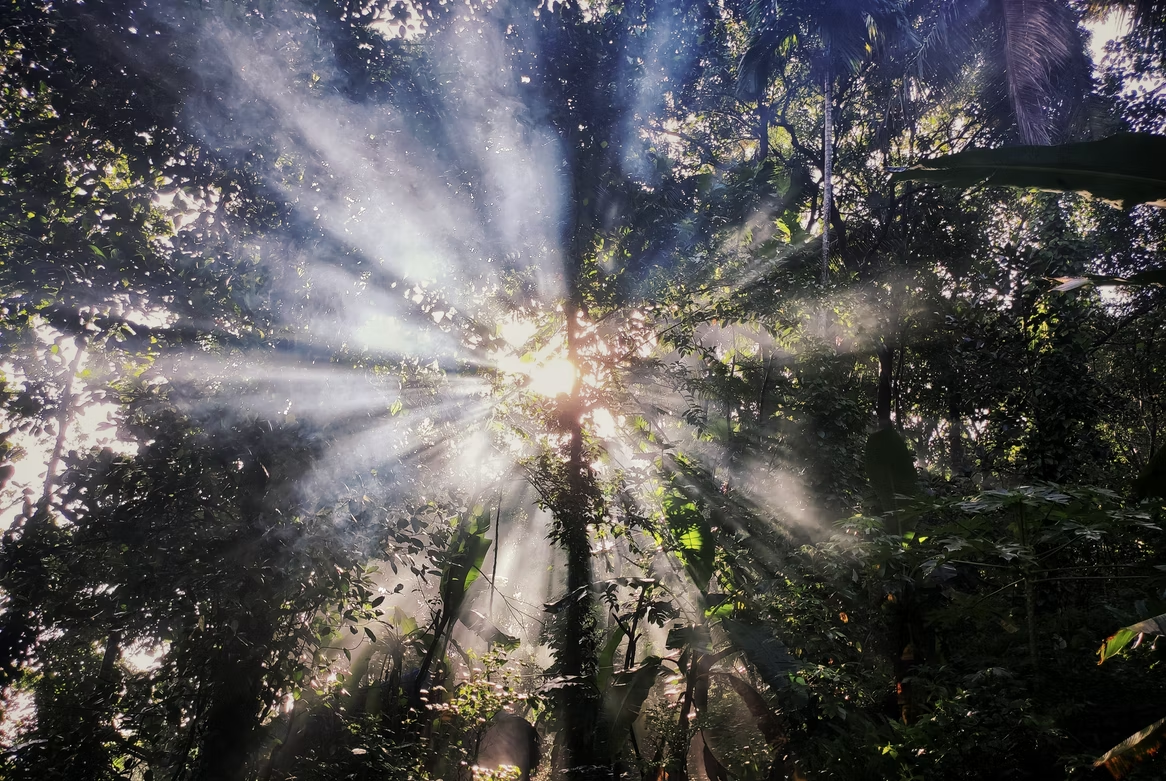-
Kevin
-
 May 2, 2022
May 2, 2022
-
 Common Questions
Common Questions
Whether you’re hoping to banish negative vibes, get rid of unwanted energies, or looking for some extra protection, black tourmaline can help — but what exactly is it?
The most abundant variety of tourmaline found in nature, black tourmaline is a crystal that’s commonly used in rituals, meditations, shrines, grids, and a variety of applications across continents, cultures, and practices. It’s often grouped in with other well-known crystals like amethyst, clear quartz, selenite, and the other crystals in the tourmaline family.
Read on to get the scoop on this beautiful stone, including its origin, uses, and more.
What Is the Definition of Tourmaline?
Tourmaline can be defined as a very hard, piezoelectric, rhombohedral mineral — (Na,Ca)(Mg,Fe,Al, Li)3Al6(BO3)3(Si6O18)(OH)4.
Compounded with elements such as iron, aluminum, magnesium, lithium, sodium, or potassium, tourmaline can be found in a wide variety of colors — such as pink, red, blue, green tourmaline, and of course, black.
Here are some of the properties of tourmaline:
- Chakra: All
- Planet: Venus
- Zodiac: Libra
- Birthstone: October
- Number: Vibrates to 2
- Elements: Earth
- Origin: Sri Lanka, Madagascar, USA, Australia, Afghanistan, Brazil, Africa, Italy, Germany
What Is Black Tourmaline?
A hexagonal crystal that’s part of the aluminum borosilicate family, black tourmaline — aka Schorl — is the coveted stone of protection and grounding. It’s compounded with iron, sodium, aluminum, borate, magnesium, or silicate and is formed when extreme heat-filled waters and minerals move through the earth.
A black tourmaline stone has a Mohs hardness of around 7 and a naturally occurring sheen, giving the stone its polished appearance. More often than not, black tourmaline also features inclusions of the mineral mica — which is silver in color — resulting in a stunning combination of light and dark.
What Is the Origin of Black Tourmaline?
Black tourmaline is thought to have come from the Sri Lankan term turmali. However, turmali was once a word used to refer to another coveted gemstone, yellow zircon.
According to legend, a mix-up in a mislabelled consignment resulted in these beautiful black stones being renamed.
That said, the first discovery of black tourmaline dates back to the 1400s when the stone was discovered in a village in Saxony, Germany (now called Zschorlau). Since then, the crystal has been found in various parts of the world, including:
- Brazil
- Pakistan
- Madagascar
- Italy
- Namibia
What Are the Healing Powers of Black Tourmaline?
An electrically charged gemstone that can benefit your physical vitality in a number of ways, a piece of black tourmaline possesses many incredible healing properties for your physical body.
Tourmaline healing properties include:
- Strengthens the immune system
- Stabilizes mood
- Reduces tension and stress
- Improves blood circulation
- Supports healthy body composition
- Reduces bloating
- Detoxifies heavy metals and pollutions
What Are the Metaphysical Properties of Black Tourmaline
Black tourmaline is known to many as a powerful stone that can help to ground both the soul and body.
That said, although its primarily associated with the root chakra, the energy of this beloved stone is connected with all seven chakras, bringing forth a higher frequency of energy that is thought to protect against psychic attacks and negative forces.
The most common metaphysical properties of black tourmaline crystals include:
- Protection
- Grounding
- Purification
- Positive energy and self-confidence
Black tourmaline should always be kept close to you so that you will always have happiness, optimism, luck, and good health.
What Are Some of the Ways To Use Black Tourmaline?
Black tourmaline’s ability to soak up, repel, and banish negative energy is highly prized in the healing crystal space. As it’s associated with the root chakra (Muladhara), this rich black gemstone is key in providing balance, protection, and grounding in your life.
With that in mind, here are some of the ways you can use black tourmaline:
- Wear black tourmaline. If you feel vulnerable to negative thoughts, tension, and stress, try wearing black tourmaline (such as a black tourmaline bracelet or other black tourmaline jewelry). Wearing black tourmaline is like wearing a cloak of protection against negative energy.
- Meditate with black tourmaline. To help you find calm and feel composed when meditating, consider using black tourmaline. It has the power to keep you grounded in the earth’s energy while connecting you to your higher self.
- Protect your home with black tourmaline. Think of black tourmaline as a guard dog and place it near the entrances of your home for protection.
- Drive with black tourmaline. For added protection, place black tourmaline in the car when you’re driving or traveling.
- Sleep with black tourmaline. For an extra boost of calming protective energy, keep some black tourmaline crystals nearby while you snooze.
Summary
An excellent stone for calming the mind and protecting your spirit, black tourmaline has origins in Brazil, Africa, and Pakistan and is commonly associated with the root chakra. It is an October birthstone and therefore a perfect match for Scorpios, Capricorns, and Libras.
If you’re searching for a protective stone that supports your overall well-being and banishes bad energy, look no further and get your hands on black tourmaline. This coveted grounding stone provides emotional healing and also has magnetism, allowing the black crystals to shield you against EMFs (electromagnetic fields).
In addition, the deep black color of the stone is stunning, making it perfect to wear as jewelry.
Sources:
Tourmaline definition and meaning | Collins English Dictionary
Tourmaline Gemstone History | Origin of Tourmalines
The Root Chakra: Your Personal Guide to Balance the First Chakra | The Art of Living




